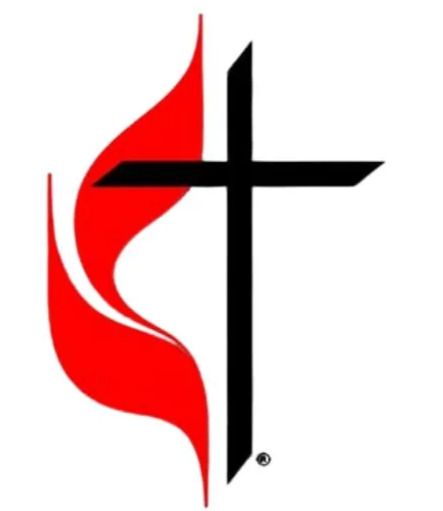Honoring Our Heritage
A Legacy of Faith at St. Luke’s UMC
The faithfulness of those who came before us lights the path we walk today. As we honor the rich history of St. Luke’s UMC, we are reminded that God’s steadfast love transcends generations, and through His grace, we are called to carry forward His light, building on the foundation of faith laid by our ancestors.
Honoring Our Heritage
A Legacy of Faith at St. Luke’s UMC
The year was 1834. Recorded in the pages of the Class Record Book of the Asbury Chapel, which is now known as Reisterstown United Methodist Church there is an account of 43 colored slaves asking for permission to hold class meetings.
These meetings were held in a log cabin near the Reisterstown Cemetery which is next to the Reisterstown Library. This historical event marked the spiritual beginnings of St. Luke’s United Methodist Church on Bond Avenue in Reisterstown, Maryland.
In time the log cabin was torn down and by 1850 worship services were held in other places and also in people’s homes.
In 1867 George Kephart a direct descendent of the founder of Reisterstown deeded ½ acre of land to a group of men called the Trustees to erect a schoolhouse for colored children and a cemetery to bury the dead.
The school in 1872 became part of the Black Public School System of Baltimore County. Unfortunately, the School House was torn down in 1997 to make way for the expansion of the church. Until then it was one of the oldest schoolhouses for African Americans in Baltimore County.
The St. Luke’s Cemetery is the resting of many African Americans. Some of the burials include former slaves. Celebrated Buffalo Soldier and native son Augustus Walley is buried in the cemetery. He was awarded the highest military award the Medal of Honor while serving on the western frontier. He was also cited for bravery during the Charge on San Juan Hill in Cuba led by Teddy Roosevelt who later became President of the United States. A solar 24-hour American Flag flies over his grave site.
In 1880 permission was received from George Kephart the great grandson of the founder of Reisterstown to build a church in front of the school facing Bond Avenue.
Upon construction the church was called St. Luke’s Methodist Episcopal Church, with Rev. Lawrence Valentine as the first Pastor. In 1968 the church became a part of the United Methodist Church denomination.
Adjacent to the church in 1898 an Odd Fellows Lodge was built next to the church. The Odd Fellows provided financial assistance to widows, orphans, and the disabled. In 1941 the hall was acquired for the church as a community hall and later became a fellowship hall.
Over time the Hall fell into disrepair. A grant was written in 2013 to restore and to preserve the building. The fully restored Hall is again available for community and public events.
Today St. Luke’s Church is proudly listed as a Maryland historic property located in the Reisterstown Historic District. Recently the church was placed on the National Register of Historic places.
A wayside historical marker on the Reisterstown Heritage Trail highlights the historical significance of the church, the cemetery, and Fellowship Hall.
These meetings were held in a log cabin near the Reisterstown Cemetery which is next to the Reisterstown Library. This historical event marked the spiritual beginnings of St. Luke’s United Methodist Church on Bond Avenue in Reisterstown, Maryland.
In time the log cabin was torn down and by 1850 worship services were held in other places and also in people’s homes.
In 1867 George Kephart a direct descendent of the founder of Reisterstown deeded ½ acre of land to a group of men called the Trustees to erect a schoolhouse for colored children and a cemetery to bury the dead.
The school in 1872 became part of the Black Public School System of Baltimore County. Unfortunately, the School House was torn down in 1997 to make way for the expansion of the church. Until then it was one of the oldest schoolhouses for African Americans in Baltimore County.
The St. Luke’s Cemetery is the resting of many African Americans. Some of the burials include former slaves. Celebrated Buffalo Soldier and native son Augustus Walley is buried in the cemetery. He was awarded the highest military award the Medal of Honor while serving on the western frontier. He was also cited for bravery during the Charge on San Juan Hill in Cuba led by Teddy Roosevelt who later became President of the United States. A solar 24-hour American Flag flies over his grave site.
In 1880 permission was received from George Kephart the great grandson of the founder of Reisterstown to build a church in front of the school facing Bond Avenue.
Upon construction the church was called St. Luke’s Methodist Episcopal Church, with Rev. Lawrence Valentine as the first Pastor. In 1968 the church became a part of the United Methodist Church denomination.
Adjacent to the church in 1898 an Odd Fellows Lodge was built next to the church. The Odd Fellows provided financial assistance to widows, orphans, and the disabled. In 1941 the hall was acquired for the church as a community hall and later became a fellowship hall.
Over time the Hall fell into disrepair. A grant was written in 2013 to restore and to preserve the building. The fully restored Hall is again available for community and public events.
Today St. Luke’s Church is proudly listed as a Maryland historic property located in the Reisterstown Historic District. Recently the church was placed on the National Register of Historic places.
A wayside historical marker on the Reisterstown Heritage Trail highlights the historical significance of the church, the cemetery, and Fellowship Hall.
